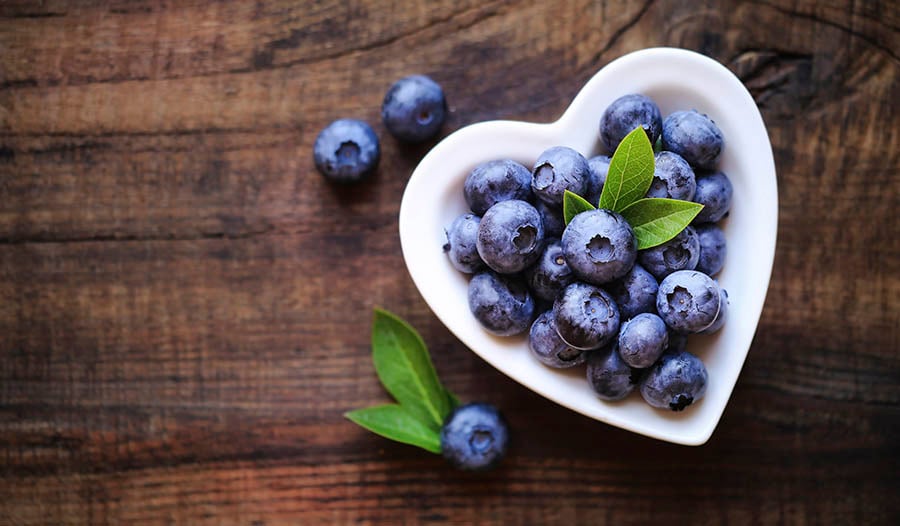Consumo di mirtilli e pressione sanguigna

I mirtilli sono tra gli alimenti più importanti per la salute. I diversi e meravigliosi benefici per la salute dei mirtilli sono dovuti principalmente al loro elevato contenuto di pigmenti specializzati, noti come antociani. Questi flavonoidi speciali sono responsabili del colore blu o viola intenso dei mirtilli.
Oltre a dare colore a frutta e fiori, i flavonoidi sono responsabili di molti dei benefici per la salute di alimenti, succhi ed erbe. Più di 8.000 composti flavonoidi sono stati caratterizzati e classificati in base alla loro struttura chimica. I flavonoidi sono talvolta chiamati "modificatori della risposta biologica della natura" per le loro proprietà antinfiammatorie, antiallergiche, antivirali e antitumorali.
È ormai assodato che un maggiore apporto di flavonoidi offre notevoli benefici per la salute. Ora, un nuovo studio ha dimostrato che il consumo regolare di mirtilli può produrre effetti clinici nella riduzione della pressione alta.
Dati di base:
Il consumo di fonti di flavonoidi come bacche, mele, tè verde, cioccolato fondentee vino rosso è stato dimostrato da studi di popolazione che è associato a una significativa riduzione del rischio di infarto e ictus. Ad esempio, i dati del Nurses' Health Study (NHS) II su 93.600 donne hanno dimostrato che l'assunzione combinata di 3 porzioni a settimana di mirtilli e fragole era associata a una riduzione del 34% del rischio di infarto rispetto a chi consumava i frutti di bosco una volta al mese o meno.
I maggiori benefici del consumo di flavonoidi nella protezione dalle malattie cardiovascolari (CVD) sono in gran parte dovuti ai loro effetti sul miglioramento della funzione delle cellule che rivestono i vasi sanguigni (cellule endoteliali). Le cellule endoteliali svolgono un ruolo fondamentale nella regolazione del tono e della struttura vascolare, nonché nell'infiammazione vascolare e nella formazione di coaguli. Le lesioni dell'aterosclerosi (indurimento delle arterie) iniziano a svilupparsi con il danneggiamento delle cellule endoteliali. È stato dimostrato che i flavonoidi, in particolare quelli presenti nei frutti di bosco, proteggono e migliorano la funzione delle cellule endoteliali.
Nuovi dati:
In uno studio condotto presso la Florida State University, sono state arruolate 48 donne in postmenopausa con ipertensione lieve per valutare gli effetti del consumo quotidiano di mirtilli per 8 settimane. Le donne sono state assegnate in modo casuale a ricevere 22 g di polvere di mirtillo liofilizzata o 22 g di polvere di controllo al giorno. Circa 22 g di polvere di mirtilli liofilizzati equivalgono a 1 tazza di mirtilli freschi, una dose raggiungibile per le persone da consumare quotidianamente.
Oltre alle misurazioni della pressione arteriosa, sono state misurate la rigidità arteriosa e le misure ematiche di proteina C-reattiva, ossido nitrico e superossido dismutasi al basale, a 4 settimane e a 8 settimane.
Dopo 8 settimane, la pressione arteriosa sistolica e la pressione arteriosa diastolica (rispettivamente 131 mm Hg e 75 mm Hg) erano significativamente più basse rispetto ai livelli di base (138 mm Hg, 80 mm Hg), mentre non vi erano cambiamenti nel gruppo che riceveva la polvere di controllo. Il consumo di mirtilli è stato anche associato a un miglioramento della rigidità arteriosa.
Il cambiamento maggiore, tuttavia, si è verificato nei livelli di ossido nitrico. I risultati hanno mostrato che il livello di ossido nitrico era maggiore (15,35μmol/L) nel gruppo della polvere di mirtillo a 8 settimane rispetto ai valori basali (9,11μmol/L), mentre non vi erano cambiamenti nel gruppo di controllo.
L'ossido nitrico svolge un ruolo centrale nel determinare il tono dei vasi sanguigni. In particolare, esercita un effetto rilassante sui vasi sanguigni, migliorando il flusso sanguigno. Inoltre, migliora la fluidità del sangue e riduce la formazione di coaguli.
Questi risultati dimostrano chiaramente che il consumo quotidiano di mirtilli può ridurre la pressione arteriosa e la rigidità delle arterie, il che può essere dovuto, in parte, all'aumento della produzione di ossido nitrico.
Commento:
Questo studio dimostra chiaramente l'importanza dei flavonoidi alimentari nel migliorare la salute cardiovascolare. Tuttavia, i diversi flavonoidi e altri pigmenti vegetali offrono diversi benefici per la salute. Una delle mie principali raccomandazioni dietetiche è quella di consumare una dieta "arcobaleno", concentrandosi su frutta e verdura colorate. Il consumo regolare di frutta e verdura colorata - rossa, arancione, gialla, verde, blu e viola - fornisce all'organismo l'intero spettro di pigmenti con potenti effetti antiossidanti e i nutrienti di cui ha bisogno per un funzionamento ottimale e la protezione dalle malattie.
Oltre a seguire una dieta arcobaleno, consiglio anche di assumere una sorta di estratto ricco di flavonoidi, come il mirtillo, il tè verde, il Ginkgo biloba, ciliegia, corteccia di pino o semi d'uva. E, naturalmente, sono favorevoli anche 1-2 porzioni al giorno di cioccolato fondente o di un'altra fonte di flavanoli del cacao.
Riferimenti:
- Johnson SA, Figueroa A, Navaei N, et al. Il consumo giornaliero di mirtilli migliora la pressione arteriosa e la rigidità delle arterie nelle donne in postmenopausa con ipertensione di stadio 1 e precedente: Uno studio clinico randomizzato, in doppio cieco e controllato con placebo. J Acad Nutr Diet. 2015 Jan 2. pii: S2212-2672(14)01633-5
ESONERO DI RESPONSABILITÀ:Questo Centro Benessere non intende fornire diagnosi...














































































